 IGNOU’s intervention in the form of the establishment of Institute for Vocational Education and Training (IIVET) could well be a benchmark for revival (indigenous knowledge) and survival (linking such knowledge with trades) of industry academia alliances
IGNOU’s intervention in the form of the establishment of Institute for Vocational Education and Training (IIVET) could well be a benchmark for revival (indigenous knowledge) and survival (linking such knowledge with trades) of industry academia alliances
Vocational Education is oft talked about but the expression is replaced, at times euphemistically, by the terms Professional Education. ‘Vocational’ implies training for ‘petty’ manual skills: carpentry, weaving, food processing, work of a mechanic etc. Professional on the other hand signifies a more educational forwardness or cultural sophistication: Business Management, Computers or better still Information Technology.
The challenges in an Open University like ours are many and impinge upon the very mechanisms and methodologies of a Distance Education and Open University such as IGNOU. These are: technology aided instruction, the use of broadcasts, telecasts and the internet for delivery services. However, in vocational education and, training face to face mode of instruction and especially skill based activities have also to be emphasized.
Vocational education has to be viewed from different multi-layered practices. One is of course the hands on training component. The other is employment generation and sustainability, whether the training programmes or courses can lead to employment /self employment. If so there has to be follow up measures to see what the participants in a vocational training programme have achieved and whether there has been a progress in terms of employability and income generation. Also, whether any industry has employed any participant, especially when there has been in plant or in house training. Another perspective of VET is studying a course on vocational education in a college or a university with the hope that the certificate will lead to an acquisition of jobs. The industry-education alliance which is gradually becoming a force in the country, one reckons that this will play a significant role in the future, what with a Skills Development Council being set-up under the aegis of and with the active support of the CII, will also, I hope, shape future events in this regard.
Skill development is one of the components and outcome of VET but training programmes should also concentrate on unskilled workers thereby giving them an opportunity to learn and earn. The unorganised sector is also a catchment resource in areas such as retailing, marketing and micro businesses.
The history of VET is not very sanguine in India especially as EDPs and allied training programmes have not been followed up. Simply leaving a participant with a certificate to fend for himself/herself has added to the plethora of the unemployed. However, with the Govt. of India’s accent on the Public Private Partnership model, one can only hope that such tie-ups will give a prod to the conscience of the industry and corporate houses, especially with Corporate Social Responsibility being such a major issue of debate today internationally, notwithstanding the polemic on ethics and CSR.
Compared to the literacy of the country, the literacy of North East India is fairly better; thanks to the Mizoram boom and this could be a marginal advantage. Yet literacy levels for women are strikingly low in some states and it is here that vocational education training programmes can intervene as basic literacy programmes to earn livelihoods.
Livelihoods have also to do with living in good if not salutary conditions. Floods in Assam every year are cataclysmic but precious little is done to take long standing measures to combat this problem. Flood control management ─ how to live intelligently with floods, could well serve vocational and training needs of the common populace who finally bear the brunt of such disasters.
 IIVET is initiating a two-month non-credit programme on Citizen Journalism and a certified Credit Programme on Folk Theatre and Performance of North East India
IIVET is initiating a two-month non-credit programme on Citizen Journalism and a certified Credit Programme on Folk Theatre and Performance of North East India
VET in the North East Region can be integrated into a whole, a complex process since we have to trace it to components of agriculture and the current despair of the educated unemployed or even the plumber or the technicians eking out a living. This is of course true of the entire country but in a Region where industrial development is in backwaters then education is strength with the presence of some very good academic institutions in the Region. These institutions should come forward in partnership whether they are general colleges or professional colleges to re-appraise vocational education in the context of the small industries and local habits mentioned above. More than having vocational education courses, short term training programmes will benefit the people keeping in mind the changing order of the ‘world’ market such as repair of mobiles and computer hardware.
IGNOU’s intervention into the area of VET in the form of the establishment of the IGNOU Institute for Vocational Education and Training (IIVET) could well be a benchmark for revival (indigenous knowledge) and survival (linking such knowledge with trades) as well as looking into contemporary realities and needs keeping in mind the training factor. The target group is the youth in particular and the public in general, taking also into cognizance rural women. And of course the oeuvre of distance education technology is always there as a ready support system.
Today the thinking of the younger generation is changing in an ethos which demands results and not only degrees. The degree bias in our educational systems is tapering, at least those in the areas of the Liberal Arts or the Sciences. That is not to say that these degrees are of minimal importance, they are not, neither they can be. But certain dual objectives that of keeping options open and exploring possibilities have entered the domains of our educational system. It is some kind of a systemic drive which declasses the hitherto hierarchical structure of education today. Young boys and girls given an opportunity will prefer to study short term Diplomas in addition to pursuing their traditional degrees. It is often been commented that the motivation here lies in the enticing job-market. The younger generation today is conscious of the realities at hand, the compulsions of being a dilettante in a world which is rushing rapidly towards a technological explosion. So taking advantage of such a situation there are a plethora of correspondence courses and ‘Educational Shops’ are sprouting in every direction. The danger here is of course the quality control as it is called.
There is also a need to train the trainers. India has very large untrained primary school teachers which is sad and does not augur too well for the educational future of the country. It is exactly keeping this in mind that the Indira Gandhi National Open University has initiated a Diploma in Primary Education/for primary school teachers at present. The functions of training the trainer, in turn generates a cybernetically related activity where the training process is ongoing.
The onus is on Universities, Open Universities and Industries. In fact the linkage between the Universities and the Industries should be one such area of emphasis where the two work at tandem: one for the knowledge part, the other for logistics, practicals and hands on training.
IGNOU Institute For Vocational Education & Training (IIVET) Shillong
The IGNOU Institute for Vocational Education & Training (IIVET), Shillong has made interventions in the following areas:
Adopting the Tele Centre model in collaboration with BASIX India (Livelihood Division, B-ABLE) in the Common Services Centres of Meghalaya. Right now a cluster of 50-60 CSCs have been taken up to train the youth in Computer Literacy and Personality Development.
 Today the thinking of the younger generation is changing in an ethos which demands results and not only degrees
Today the thinking of the younger generation is changing in an ethos which demands results and not only degrees
The IIVET has also collaborated with Central Institute of Plastic Engineering Technology (CIPET) in Guwahati to train young men and women in Machine Operator and Injection Moulding. More than 30 youth have been trained and placed in different parts of India in the plastic industry in the state of Haryana and Maharashtra.
IIVET is also collaborating with Rustomjee Academy for Global Career Mumbai to train school drop outs in Carpentry Shuttering. Around 35 youth from the states of Meghalaya and Manipur have been given free training and some of them are on the verge of coming back so that they are employed or self employed. IIVET has undertaken a one year certificate programme on Valuation in Real Estate Management (CVREM) in collaboration with Institute of Estate Managers & Appraisers Kolkata. Considering a vast demand for the Valuation and Real Estate industries this programme has been taken up. Fourteen students from different parts of the country employed or self employed have been registered. This began in July 2010 and will end in July 2011. It is being implemented through Distance Education mode and on line teaching.
IIVET has signed an MOU with the State Institute of Capacity Building Government of Sikkim, in the areas of certification for trades such as Hospitality, Animal Husbandry, Computer Hardware, Computer Software, Cultural and Traditions Crafts, Paper Bags, Paper Binding, Electrical Repair, and Foreign Languages (Chinese, Japanese, Tibetan etc), Tourist Guide, Eco-Village, Cooking and Catering, Cultural Tourism; House Keeping, Front Office Management and Food and Beverages. IIVET is also collaborating with Institute of Hotel Management, Sikkim for certification in hospitality related courses of a vocational nature. The students will also be certified in the Prior Knowledge scheme of IGNOU. The Indian Welding Society and IIVET have achieved a recent tied up in the profession of Welding. In September 2010 a three day training programme was held for practicing welders who were trained in the latest methods of welding technology. They were also certified under the Prior Knowledge concept of IGNOU. More training programmes are to be held.
IIVET has established vocational training in Nagaland in collaboration with Nagaland Gandhi Ashram and Regional Institute of e-Learning & Information Technology (RIELIT) (A Unit of DOEACC) Government of India, Department of Information Technology in Chuchuyimlang in the Mokochung district of Nagaland. Right now a two month training on Computer Hardware is being organised which is residential. IIVET has also initiated an MSW Programme of IGNOU in Chuchuyimlang through the aegis of the Mahatma Gandhi Institute for Education and Development IGNOU. There are about twenty students enrolled from different parts of North East India.
IIVET has also taken up the role of promoting indigenous crafts such as Kouna and Chungtham crafts of Manipur made out of Water Reeds. A two month training programme to this effect has been conducted in the year 2010 from September to November in collaboration with Kasturba Gandhi Institute for Development, Imphal.
Vocational Education and Training has to be understood at various levels right from Technical Vocational Education to Soft Skills, to Computer Literacy, to Communication Skills, to Aesthetic Skills and Indigenous Practices such as Weaving etc. Only then can we understand the various multi layer dimensions of Vocational Education & Training, keeping in mind the different target groups of our societies enunciated by the National Skills Mission Report. These mainly being: school and college drop-outs, domestic workers, street children, and the educated unemployed. Certification and Assessment is and will continue to remain one of our top priorities.
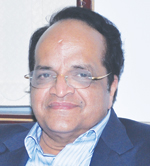 An increase in the number of scholarships for SC/ST students is definitely in line with inclusive higher education and social mobility. Prime Minister's national skill mission is given ample priority. Minority education is also being advanced. As anticipated , overall it has been a good budget.
An increase in the number of scholarships for SC/ST students is definitely in line with inclusive higher education and social mobility. Prime Minister's national skill mission is given ample priority. Minority education is also being advanced. As anticipated , overall it has been a good budget. Increased allocation in RTE is a good sign and states will be able to implement it more effectively
Increased allocation in RTE is a good sign and states will be able to implement it more effectively
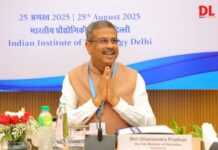
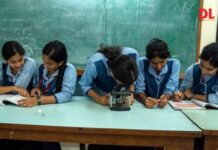



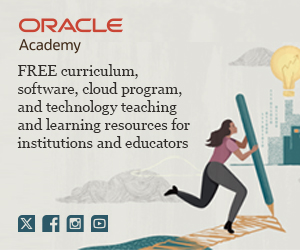

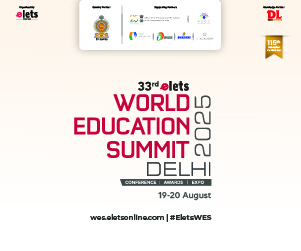

 The IGNOU School of Tourism, Hospitality Services Management has come up with not only training people but also providing excellent placements in leading organisations in the country for aspirants in the Tourism and Hospitality Sector
The IGNOU School of Tourism, Hospitality Services Management has come up with not only training people but also providing excellent placements in leading organisations in the country for aspirants in the Tourism and Hospitality Sector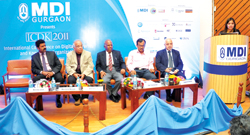 Management Development Institute (MDI) in association with Indian Association of Special Libraries and Information Centres (IASLIC) and INDEST-AICTE Consortium, Ministry of HRD, Government of India had successfully organized the International Conference on Digital Libraries and Knowledge Organization (ICDK 2011) during 14 to 16 February 2011 at MDI Gurgaon. International organizations such as UNESCO, South Asian Studies Council of Yale University and Goethe-Institute (Max Mueller Bhavan) were also partners in organising this conference. The conference has brought together over 300 delegates from all parts of the world. Around 50 participants from outside India.
Management Development Institute (MDI) in association with Indian Association of Special Libraries and Information Centres (IASLIC) and INDEST-AICTE Consortium, Ministry of HRD, Government of India had successfully organized the International Conference on Digital Libraries and Knowledge Organization (ICDK 2011) during 14 to 16 February 2011 at MDI Gurgaon. International organizations such as UNESCO, South Asian Studies Council of Yale University and Goethe-Institute (Max Mueller Bhavan) were also partners in organising this conference. The conference has brought together over 300 delegates from all parts of the world. Around 50 participants from outside India. The growth in Indian Automotive Industry has grown at a CAGR of over 14%. The size of the automotive sector in 2008-09 was estimated to be around `1,910 billion. It is expected that an additional 2- 2.5 million employment opportunities per annum will be created in the next decade
The growth in Indian Automotive Industry has grown at a CAGR of over 14%. The size of the automotive sector in 2008-09 was estimated to be around `1,910 billion. It is expected that an additional 2- 2.5 million employment opportunities per annum will be created in the next decade Translation has helped knit India together as a nation throughout her history. Ideas and concepts like ‘Indian literature’,’Indian culture’,’Indian philosophy’ and ‘Indian knowledge systems’ would have been impossible in the absence of translations with their natural integrationist mission
Translation has helped knit India together as a nation throughout her history. Ideas and concepts like ‘Indian literature’,’Indian culture’,’Indian philosophy’ and ‘Indian knowledge systems’ would have been impossible in the absence of translations with their natural integrationist mission IGNOU’s intervention in the form of the establishment of Institute for Vocational Education and Training (IIVET) could well be a benchmark for revival (indigenous knowledge) and survival (linking such knowledge with trades) of industry academia alliances
IGNOU’s intervention in the form of the establishment of Institute for Vocational Education and Training (IIVET) could well be a benchmark for revival (indigenous knowledge) and survival (linking such knowledge with trades) of industry academia alliances

 The shortage of skilled labour and employable talent pool led to IGNOU's Finishing School Initiative where attempts have been made to address the issue by collaborating with country's best training partners
The shortage of skilled labour and employable talent pool led to IGNOU's Finishing School Initiative where attempts have been made to address the issue by collaborating with country's best training partners
 India’s transition to a knowledge-based economy requires a new generation of educated and skilled people. The competitive edge will be determined by its people’s ability to create, share, and use knowledge effectively. India requires a knowledge economy to develop workers – knowledge workers and knowledge technologists – who are flexible, analytical and will be the driving force for innovation and growth
India’s transition to a knowledge-based economy requires a new generation of educated and skilled people. The competitive edge will be determined by its people’s ability to create, share, and use knowledge effectively. India requires a knowledge economy to develop workers – knowledge workers and knowledge technologists – who are flexible, analytical and will be the driving force for innovation and growth








